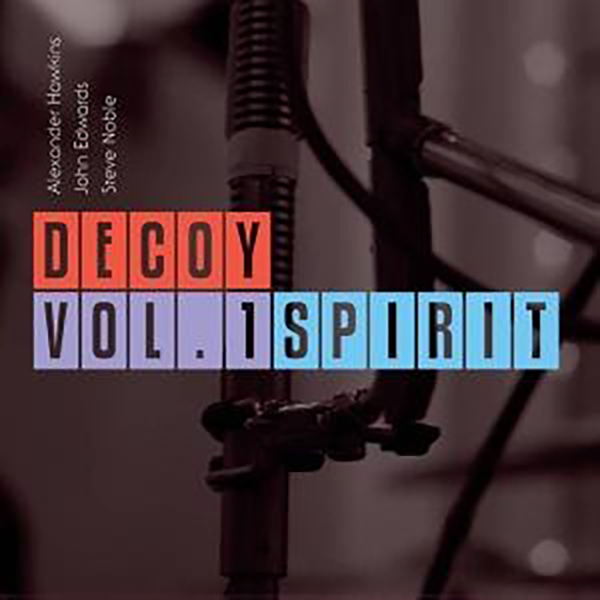
by Tim Owen
March 25, 2010
/ ALBUM
This is a great studio recording that goes some way to capturing the excitement that Decoy can generate live
Alexander Hawkins; Hammond C3 organ
John Edwards; double bass
Steve Noble; drums, cymbals
This is a great studio recording that goes some way to capturing the excitement that Decoy can generate live, but it’s a relatively introverted affair. In many ways that makes it particularly appealing. John Edwards is unusually restrained, which allows a new appreciation of his open ear and the subtleties of his technique, things often obscured by the robust physicality of his live persona. Edwards’ well-established working relationship with Steve Noble - a concurrent trio, NEW, is completed by guitarist Alex Ward - often sees them called upon to summon up their fiercest, freest jazz. In Decoy they play a primarily supportive role, which allows them the opportunity to relax a little and experiment, though there’s no diminution of focus or intensity. Partnered with pianist Alexander Hawkins, who here plays only the Hammond B3, they have a wide-open remit for creativity. True, the Hammond trio format comes with some pretty weighty cultural baggage, but Hawkins pays those precedents scant heed.
Of the tracks on Spirit (as the full title implies there is a companion, vinyl-only volume titled The Deep), Who’s Who comes closest to acknowledging any indebtedness to the sound of precursors such as Jimmy Smith. It’s a short, jaunty number that sees Edwards walking his bass lazily across rather more restless percussion from Noble. The opening Outside In is more typical: all lowering atmospherics building from a bedrock shimmer of bowed bass, light washes of Hammond, and rippling cymbal percussion. When the Hammond edges into aggression the others, in this instance, react tentatively. The title track is similarly fitful. It moves from probing, impressionistic beginnings through numerous isolated sound events. If Hawkins and Edwards engage in a playful duet, the mood soon darkens, with Noble engendering some percussive turbulence. The piece fluctuates between these two dispositions, and here as elsewhere the group seem resolved to avoid the obvious ways forwards.
The album progresses as a series of sensitively executed experiments in sound. The Hammond continues to dominate, making full use of the ethereal tonality of the Leslie cabinet, but the fulsome support of Edwards and Noble is vital. Edward’s bowing on Native Origins is notably astringent, as it imbues the track with a glowering, edgy restiveness. Even when the band shifts up a gear the mood remains uneasy. Needless to say both men can be rumbustious when the mood takes them. Immersive soundscapes are navigated with a solid tunefulness that retains, however faintly, a sense of classic jazz swing. No rag-bag of Foley experimentation, on the contrary Spirit is meticulously constructed, either by design or improvisatory impulse. As the closing, well titled Shadows takes the album out gently, Hawkins’ Hammond B3 leaves listener’s ears highly attuned to the atmospherics of their environment, and also to new possibilities in sound and music.
blog comments powered by Disqus